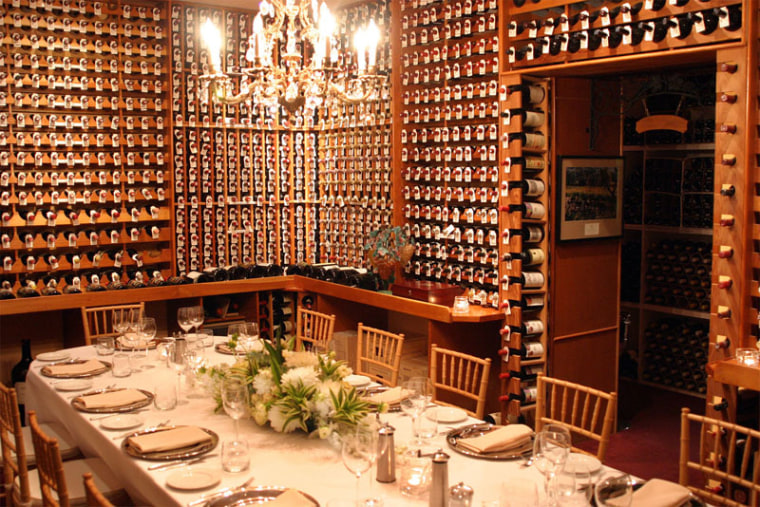Italian food—far more than French cuisine—has conquered the world. So much so, you're as likely to find an upscale ristorante, a homey trattoria and a score of pizzerias in Munich, Osaka, Buenos Aires and Moscow as in Florence, Rome, Venice and Naples. But because of the enormous wave of Southern Italian immigrants who came to the U.S. starting in 1880, America developed an early, unique Italian-American cookery that has, in many ways, become the standard for restaurants around the world. Dishes like chicken parmigiana, spaghetti with clams and veal Valdostana are now staples everywhere.
Italian-Italian food is really regional Italian food, and increasingly in the U.S. we've been seeing more and more restaurants featuring the cuisine and wines of Tuscany, the Veneto, Campania, Sicily, even Sardinia. This evolution is part-and-parcel of the chicness that Italian style has so successfully purveyed over the last two decades—in fashion, design, and art. Young American chefs, many without any Italian background, fell in love with Italian flavors and have acquired the experience and ingredients to create Italian food every bit as "authentic" as in Italy.
"Twenty years ago it was very difficult to reproduce regional Italian cuisine," says Tony May, the Neapolitan-born owner of New York's illustrious San Domenico, which the Gayot online guide calls one of the top 40 restaurants in the U.S. "A chef couldn't get imported Parmigiano-Reggiano or buffalo milk mozzarella, virgin olive oil, prosciutto di Parma, or balsamic vinegar. Now, everybody can buy the finest of such ingredients, and it's made a tremendous difference in the taste of the food."
As a result, Italian restaurants have flourished from Boston to Seattle, buoyed by an enormous selection of prestigious, regional Italian wines. A restaurant like Bartolotta, landlocked in Las Vegas, can serve the same seafood as one in Palermo or the coast of Liguria.
"Fed-Ex and DHL changed everything," says chef Paul Bartolotta. "I can get the freshest branzino, orata, triglie and other Mediterranean fish shipped to me overnight for my menu that evening." At Valentino in Santa Monica, which the Italian guide Gambero Rosso calls "the best Italian restaurant in the world," owner Piero Selvaggio cellars more than 2,500 wines, most of them Italian, many from rare small estates, bringing the restaurant a Grand Award from Wine Spectator.
At their highest levels, America's Italian restaurants have a modern grandeur that's rare even in Rome or Florence. In Chicago, the 23-year-old Spiaggia, whose chef, Tony Mantuano, was chosen "Best Chef in the Midwest 2005" by the James Beard Foundation, is a two-level restaurant overlooking a broad expanse of the Magnificent Mile within sight of Lake Michigan; its private dining rooms and chef's table are among the most sumptuously set in the city. So, too, Tony's in Houston, run by the indomitable Tony Vallone, is in its third incarnation, with a dramatic, postmodern décor that includes sculpture by Jésus Moroles and works by Robert Rauschenberg, and other top artists. The Houston Chronicle contends, "Tony Vallone brings his impeccable culinary instincts and a hands-on approach. Food doesn't get much better or more elemental than this."
Tony's is a particularly interesting case study because it shows just how far Italian restaurants have come in America. When it opened in 1965, Houston was still a dry town. Back then Tony's served continental cuisine with several Italian-American favorites. By the time it relocated to the glamorous Galleria shopping mall in 1972, Tony's had become a place where you'd easily find Frank Sinatra, Sophia Loren, George H. Bush and every major sports figure in town; the cooking was half French, half Italian, with a little chili thrown in. Now, in its new location, Tony's plays to a younger crowd that comes for rigorously authentic Italian regional cuisine and great wines.

Not all of the best Italian restaurants are so grandiose; several smaller gems have established their credentials. Consider the intimate Quince in San Francisco, with one Michelin star, and the charming All'Angelo in Los Angeles, which is considered one of the most exciting new restaurants in the country.
Of course, New York still rules when it comes to the sheer number and variety of Italian restaurants. The wonderfully classic Theater District restaurant Patsy's has hosted Al Pacino, Placido Domingo, Madonna, George Clooney, Sean "Puffy" Combs, Oprah Winfrey, Keanu Reeves and Tony Bennett. And then there's the Istrian cooking at Felidia; Piedmontese cuisine at Barbetta; Tuscan food at Osteria del Circo; Campanian specialties at Roberto's; Abruzzese items at Il Mulino; and Puglian dishes at I Trulli. No other city—and this includes cities in Italy—has that kind of breadth.
But it won't be long before such regionality expands to Louisville and Minneapolis, too.
